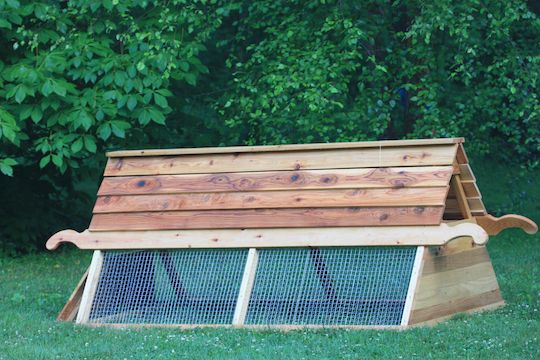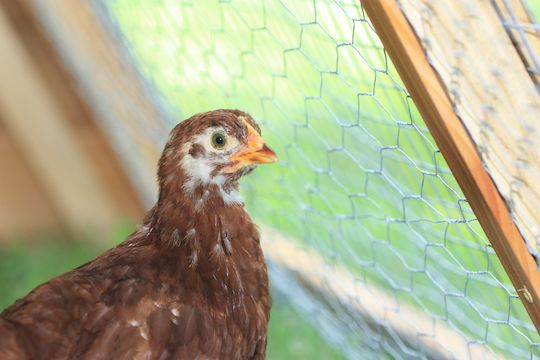Crow’s Nest: The chicken tractor
For a while I’ve wanted to have a chicken tractor—a portable pen for chickens moved every day—and since we now have chicks Denise has built us one.
I’ve read Chicken Tractor: The Permaculture Guide to Happy Hens and Healthy Soil by Andy Lee and Pat Foreman, and have a copy of Joel Salatin’s You Can Farm which describes how he integrates chicken tractors into his grass-fed beef farming.
We want to give our chickens access to natural foraging conditions but due to the potentially high predator pressure here (in the middle of a nature preserve) we want to keep the chickens inside a secure pen. A chicken tractor solves that dilemma.
Denise picked a plan she found on the internet and is building this coop that we call the “Ark of the Covey.”

The birds spend the days on fresh ground, then climb a ramp that is secured for the night. There is a perch and nesting boxes upstairs. A feeder and water are suspended from the ceiling. Right now it is a two person move but with skids slipped under one end it should be a one person job. It is made with really lightweight wood: cedar and paulownia.
We bought red cedar for its light weight and rot resistance but also rescued some paulownia wood. Here’s the story: Natural Lands Trust has a few paulownia or princess trees (Paulownia tomentosa) planted on its preserves for harvest to raise money for those preserves. Although paulownia is not a native tree it is traditionally a highly prized wood in its native Japan for dowry chests and other furniture because the wood is easily carved and does not crack as it cures. Its timber crop value is often as high as walnut and a few small plantations can help build an endowment for managing the preserves. It occasionally sets seed and shows up unplanted in disturbed sites but isn’t the kind of invasive species that forms a monoculture that could threaten the preserve.
A few years ago an unplanted one at Mariton Wildlife Sanctuary overhanging the former education center was cut down. Some of the wood was milled for Martin Guitars as an experiment in its use in making guitars. I’m told they made a couple and were impressed enough to plant some paulownia trees themselves.
The leftover odds and ends from the milling were thrown on the burn pile; it is not a strong wood so can’t be used for most construction. I set it aside and stored it for a couple of years, and Denise cut it into sizes that fit the chicken tractor plans. Apparently paulownia is not only light but somewhat rot resistant, though we also coated it with boiled linseed oil. How many chickens can say their coop is made of guitar wood? (Keeping the wood out of the burn pile is also a way we can sequester its carbon for a bit longer.)

The birds are protected by a double layer of chicken wire on the sides; the bottom is open to the ground, which is why they must go upstairs at night. This design says it can hold 5-6 birds so our three seem comfortable in it. The birds devour insects each time the coop is moved. Feel free to stop to see it when you are visiting the preserve; it’s in a different place each day but somewhere near our house or the visitor center barn.
